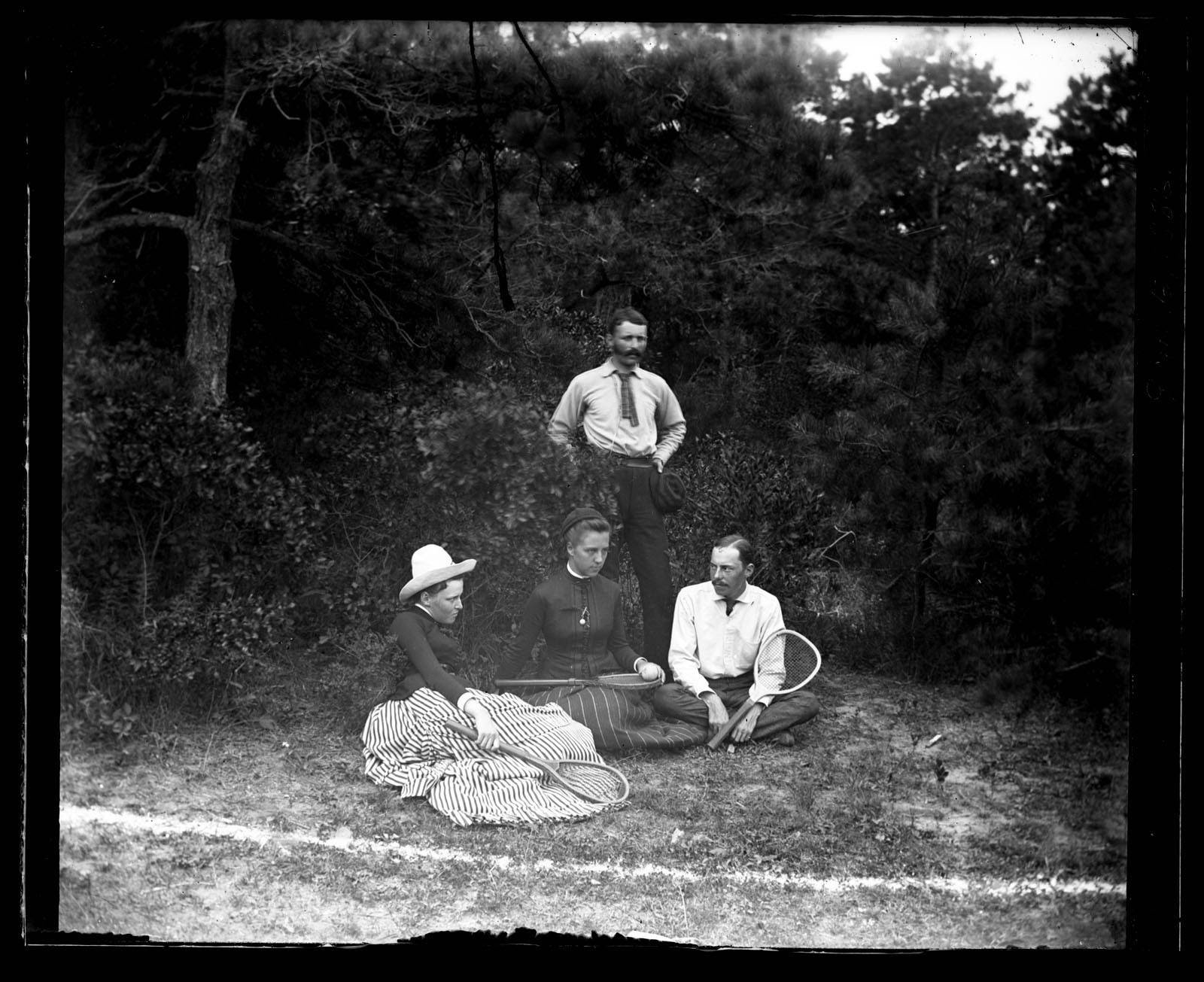Crescent Park has a history that dates to the 1850s, when Commodore Robert Stockton, a naval commander, politician and one of the wealthiest men in New Jersey combined two farms and the surrounding cedar forest between the Wreck Pond inlet and what is now Stockton Lake to build his seaside retreat which he called Sea Girt. (Note all vintage images are from the Marriot C. Morris Collection at the Library Company of Philadelphia)
The original map of the resort of Sea Girt shows the park clearly labled Stockton’s beach house to the south (left)
The crescent served as the racetrack for Stockton’s thoroughbreds, which he would race against those of his well-heeled guests. The beachfront sand was the straightaway, and he could cheer on his favorites right outside the door of his Beach House mansion which was situated at the foot of what is now Trenton Blvd.
When the land was being prepared as a resort in the early 1870s, The Sea Girt Land Improvement Company and engineer Charles Ingraham mapped the property and preserved the infield of the raceway as a public park. It was the centerpiece of a radial map from which all streets converged. The park was featured in the brochures and reflected in the deeds.
Quaker Elliston Perot Morris from Germantown, PA, paid $2,500 for his lot on the beachfront, where 619 Ocean Avenue is today in December 1875. Hibberd Yarnell built the ornate three-story Victorian house named Avocado. Morris and his family enjoyed the beach and the forest behind it as a quiet retreat.
Avocado on the dunes in the 1880s
Sam Morris sits in the park among the cedars
With lot sales slow, and the Land Improvement Company struggling to meet its mortgage, James Hunter, John Lucas and Henry Yard had the plot plan redrawn into a more traditional layout by Engineer Fredrich Asnpach.
Without notice, work crews began to cut down the forest near today’s Philadelphia Blvd, seemingly continuing First Avenue through the park. Hearing this, and fearing the destruction of the woods. Morris filed for an injunction and work was halted.
The land company claimed they were simply straightening the sightlines for people driving through the park. They were improving the park by clearing small brush. However, the testimony of large trees cut and the Anspach map left no doubt to the judge that the company had plans to destroy the park. The final judgment was issued in 1884. The land company lost and had to pay Morris’ costs.
The judge ruled:
“The bill is filed to restrain the defendant, the complainant’s grantor, from opening any streets or avenues through what is known as Crescent Park (a plot of about twenty acres, dedicated by the defendant to public use for a park) at Sea Girt, or using the park or any part thereof as a public highway; and from cutting and removing any timber, trees or shrubs growing or being in or upon that park, and from in any way destroying, defacing, marring or impairing the park or any part of it, and from using it or any part of it for any purpose inconsistent with its use as a park or pleasure-ground”
The revised map showing the intent to “plot” the park out of the resort. Note the limited structures after 8 years of sales.
The north end of the park was now an open field. Elliston Morris’ son Marriott Canby Morris invited his Haverford College friends and he began a family tradition of using the cleared land at the north end of the Park for tennis. Morris’ grandchildren maintained the tradition and the town took over maintenance of the courts, putting a hard surface down in 1931. It remains the third oldest tennis facility in New Jersey.
1883, even before a final ruling on the case, the Morris’ enjoyed tennis on the cleared land.
The same angle with the modern courts
Marriott Morris is pictured center.
Morris with his boys in 1907 passing on the tradition.










